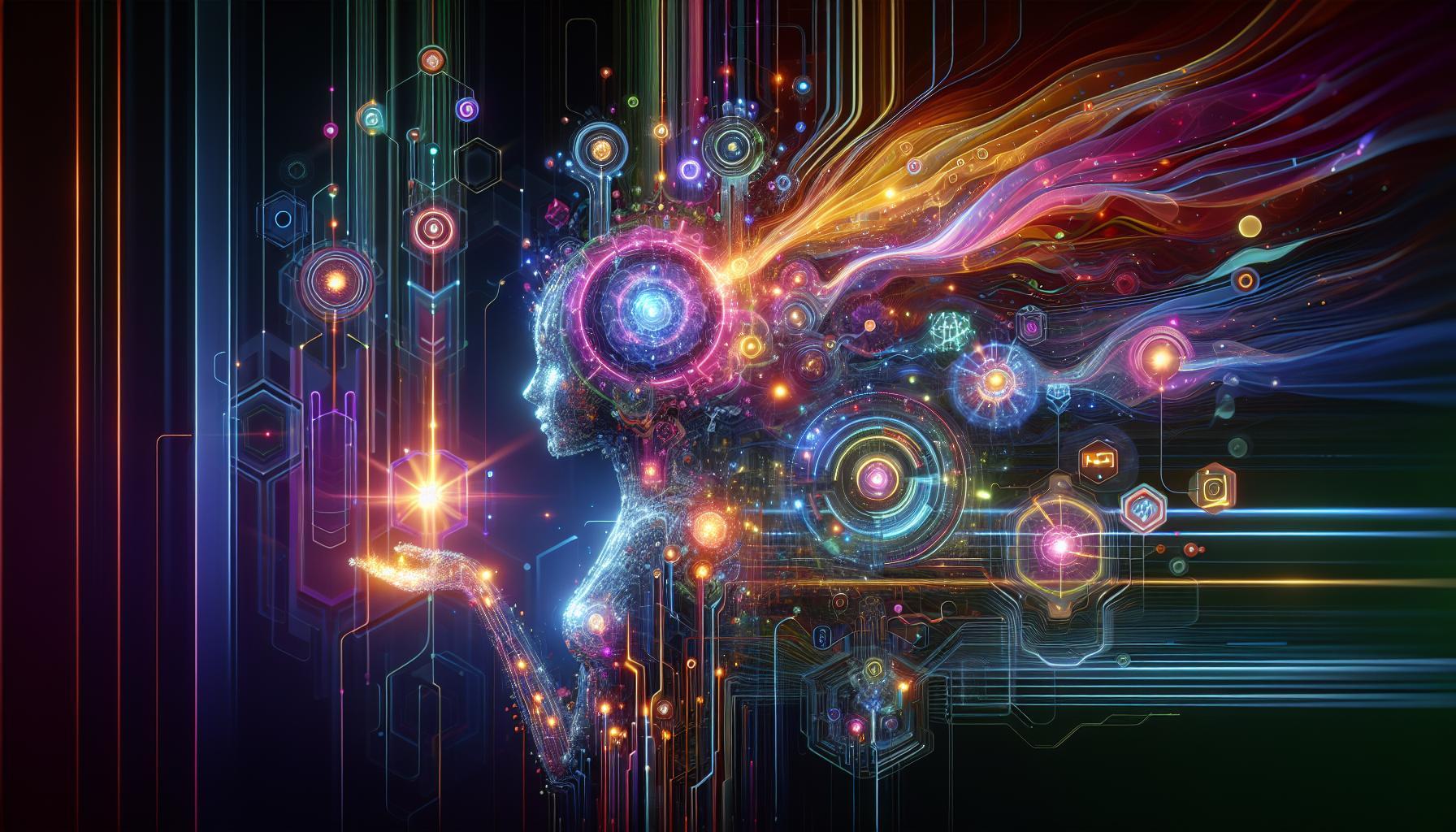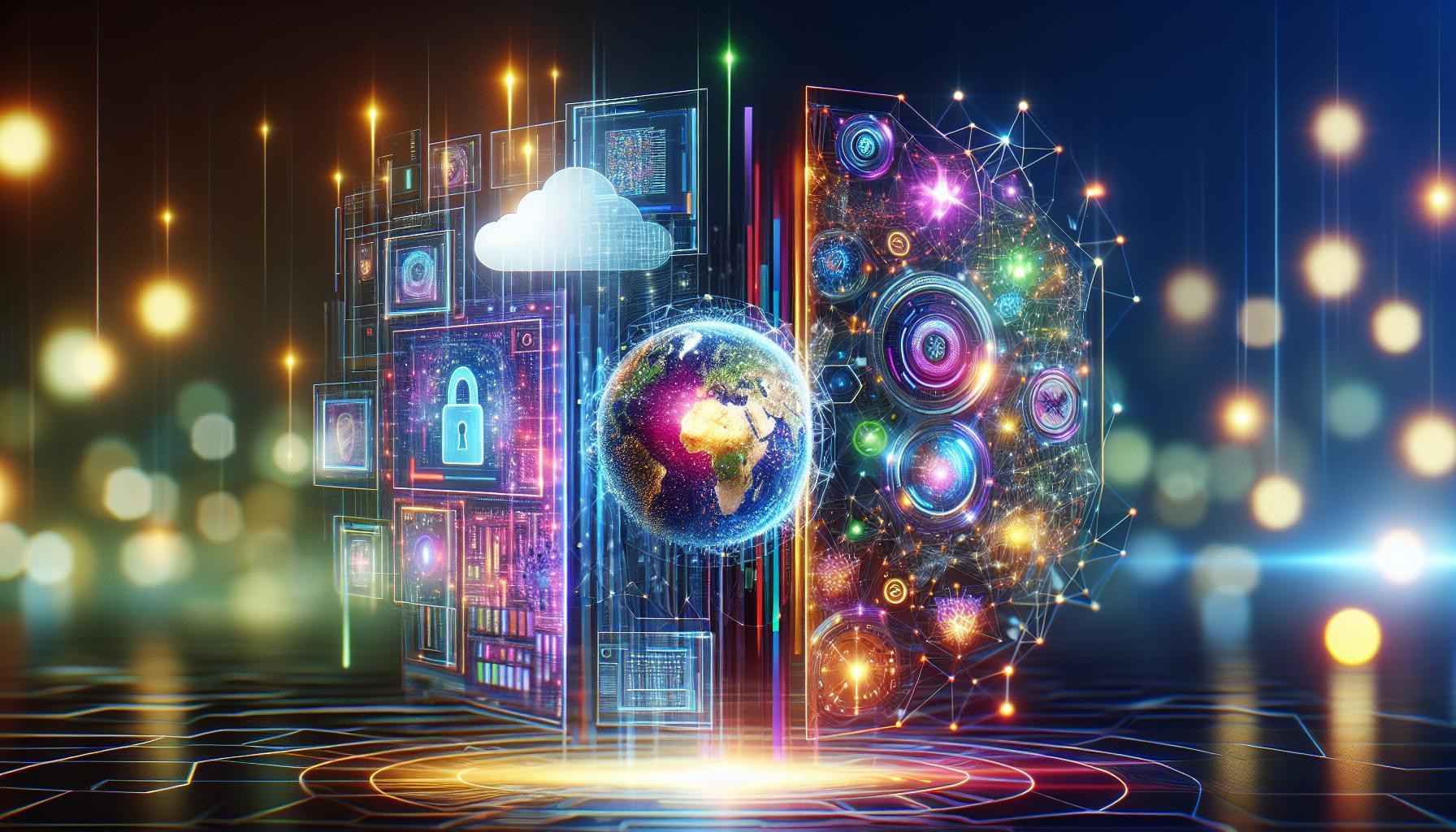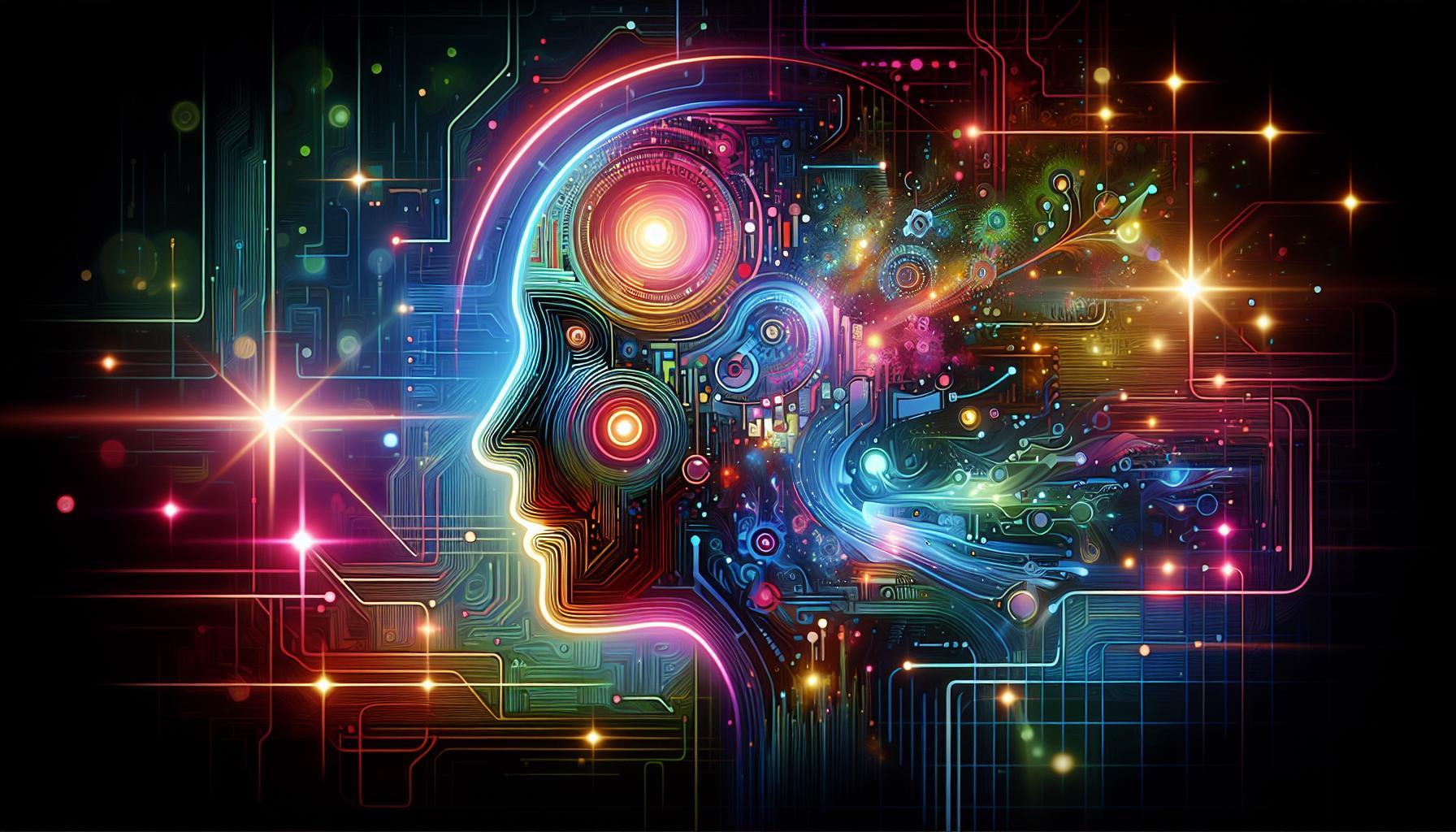As AI technology advances, the question of ownership becomes critical: who really holds the keys to powerful models like Stable Diffusion? Understanding the dynamics of AI model ownership is essential for developers, businesses, and users alike, as it impacts innovation, access, and ethical considerations in the rapidly evolving landscape of artificial intelligence.
The Evolution of AI Model Ownership: A Historical Perspective
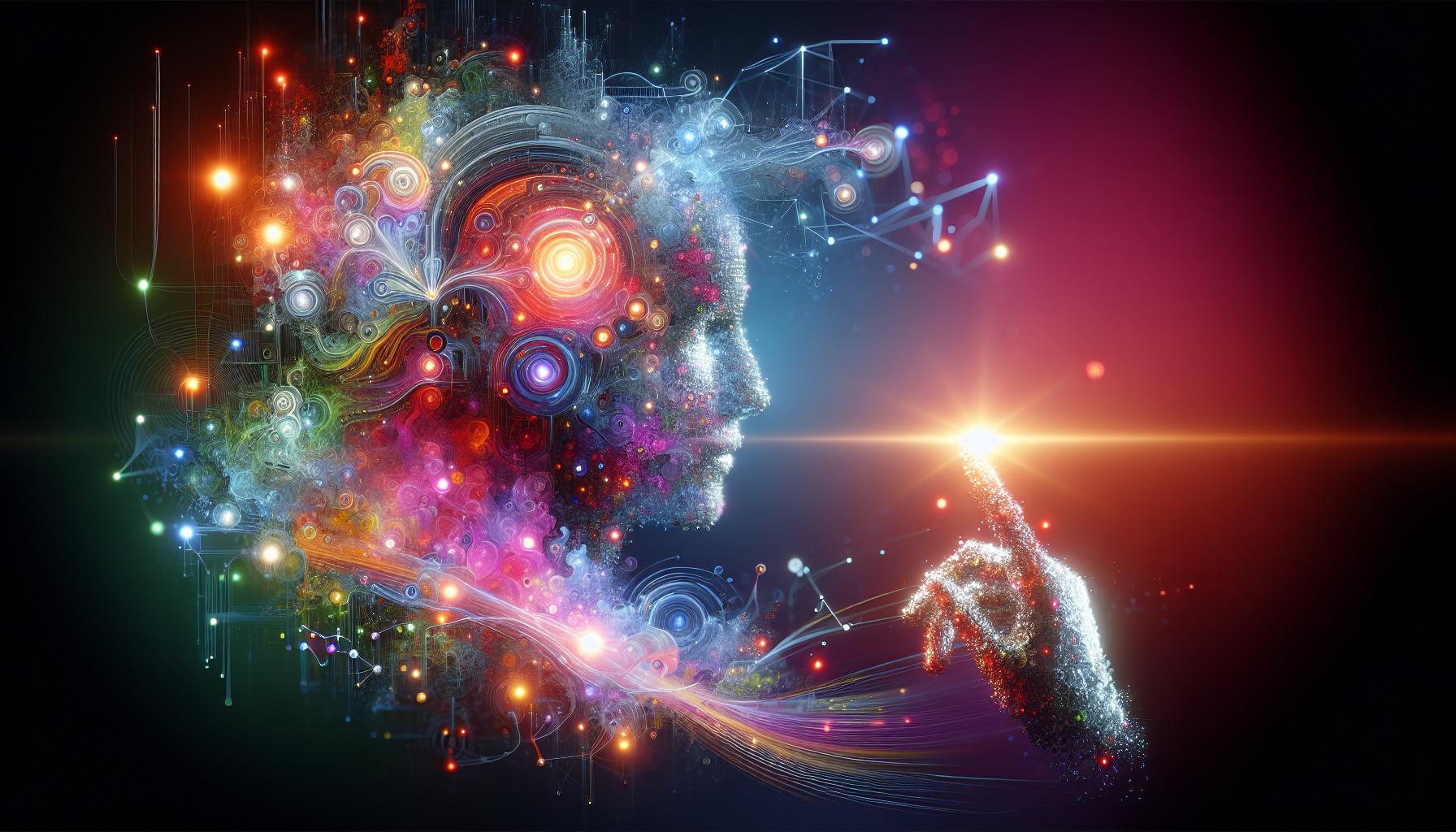
The realm of artificial intelligence has undergone profound transformations, particularly regarding the ownership of AI models. Today, the discussion around who owns AI models like Stable Diffusion is not merely academic; it has significant legal, ethical, and economic implications. This evolution has been shaped by technological advancements, shifting societal norms, and the growing recognition of intellectual property rights in AI.
Early Stages of AI Development
In the formative years of AI, the concept of model ownership was often simplistic. Researchers operated in isolation, honing algorithms and methodologies in academic institutions or corporate laboratories. The predominant belief was that the institution funding the research inherently owned the results. This led to a landscape where entities like universities and tech companies predominantly controlled the outcomes of AI development without much consideration for the individual contributors’ rights.
The Rise of Open Source
With the onset of the open-source movement in the late 20th and early 21st centuries, there was a marked shift toward collaborative innovation. OpenAI’s development of models like GPT-2 and later, the Stable Diffusion project, reflects a growing trend towards democratizing technology. Open-source licenses allowed these models to be freely available while still navigating the complex questions around ownership. A few key characteristics of this era include:
- Collaboration over Competition: Developers and researchers began to share their work freely, pooling resources and knowledge.
- Licenses and Attribution: Greater emphasis was placed on how contributions were recognized, with a variety of licenses emerging to define usage rights.
- Community Impact: The community began to play a significant role in model governance, pushing for responsible AI development that considers bias and ethical implications.
Current Trends and Governance
As AI technologies like Stable Diffusion gain traction, the conversation around ownership has become increasingly intricate. Legal frameworks are now attempting to catch up with rapid advancements in AI. For instance, the European Union’s AI Act and similar regulations in other regions are addressing these complexities by striving to establish clear guidelines for ownership, liability, and ethical use of AI models.
| Aspect | Traditional Ownership | Modern Ownership (e.g., Stable Diffusion) |
|———————-|———————————–|————————————————–|
| Control | Centralized (Company/Institution) | Decentralized (Community and Contributors) |
| Licensing | Proprietary Licenses | Open-source Licenses with Attribution |
| Community Involvement | Minimal | High |
| Ethical Considerations | Limited focus | Central to discussions and governance |
As we navigate these evolving dynamics, it’s essential for developers, researchers, and users alike to understand their rights and responsibilities concerning AI models. Engaging in discussions around who owns Stable Diffusion means participating in a broader conversation about what responsible AI development looks like in this rapidly changing landscape. The future of AI model ownership will likely reflect a blend of communal engagement and formal legal structures, shaping not only how AI models are developed but who benefits from their use.
Key Players in the Stable Diffusion Landscape
The landscape surrounding Stable Diffusion is characterized by a dynamic interplay between innovative technology and its developers, who play integral roles in shaping how this AI model evolves and is utilized. At the heart of this ecosystem is Stability AI, a key player that not only developed the Stable Diffusion model but also spearheaded efforts to democratize access to advanced AI technologies. Their commitment to open-source principles has encouraged a diverse community of users and contributors to engage with and enhance the platform, fostering a collaborative environment for creative exploration.
Core Contributors and Collaborators
The influence of various collaborators in the Stable Diffusion framework cannot be overstated. These include:
- CompVis: The research group behind the original development of the Stable Diffusion model, contributing essential research and code that form the backbone of the technology.
- LAION: A nonprofit organization that provided the massive datasets necessary for training the Stable Diffusion model, ensuring that it has access to diverse and representative image-text pairs.
- Community Developers: Numerous independent developers and researchers continue to build enhancements and tools that expand the functionalities of Stable Diffusion, tailoring it for specific use cases such as game development, filmmaking, and more.
Moreover, the community engagement through platforms like GitHub allows users to not only report issues but also propose modifications, creating an ever-evolving tool that adapts to user needs and industry trends.
Commercial and Artistic Impacts
The commercial aspects of Stable Diffusion have also attracted notable attention. Startups and established companies increasingly integrate Stable Diffusion’s capabilities into their workflows to produce high-quality graphics and enhance creative projects. This includes sectors such as digital marketing, gaming, and even fine arts, where AI-assisted creativity is reshaping traditional practices.
Practically speaking, for artists and developers looking to harness the power of Stable Diffusion for their projects, the following steps are recommended:
- Explore the vast array of community resources and documentation available online to understand various functionalities.
- Experiment with different prompt engineering techniques to generate unique outputs tailored to specific creative visions.
- Participate in forums and collaborative platforms to share experiences and seek advice from other users to maximize the use of Stable Diffusion.
In summary, understanding who drives the development and utilization of Stable Diffusion reveals a collaborative network of innovators and users who collectively influence its trajectory and application in a variety of fields, a key aspect of the discussion around AI model ownership and responsibility.
Decoding the Mechanics: How Stable Diffusion Works
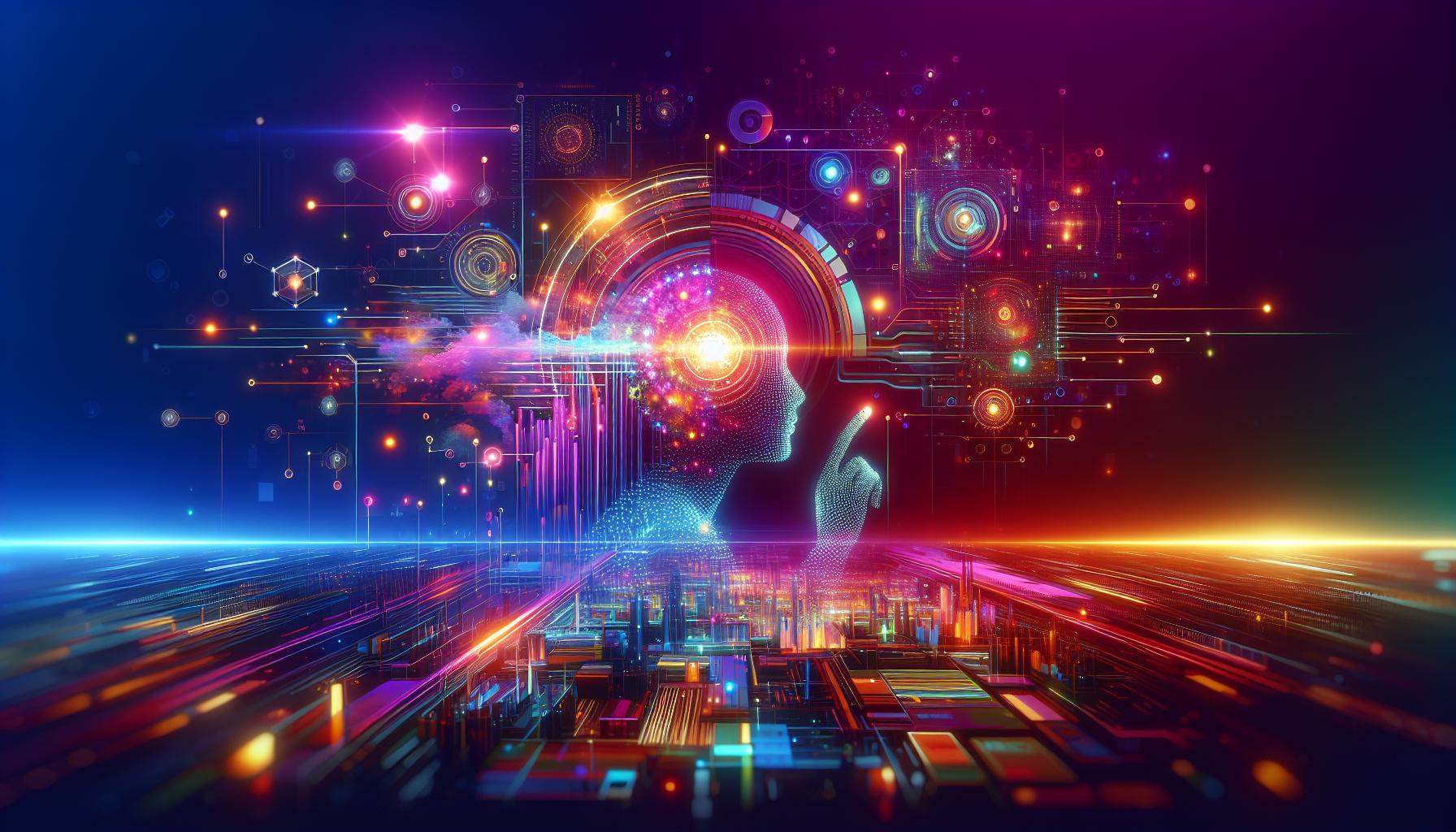
Understanding the intricacies of how Stable Diffusion operates reveals much about not only the technology behind it, but also the ongoing dialogue around AI model ownership. This innovative text-to-image generation model functions on the principles of deep learning, utilizing vast datasets and sophisticated neural networks to produce stunning visuals from textual prompts. The emergence of such technology raises pivotal questions about copyright and ownership, particularly as various entities utilize these models for creative pursuits.
At its core, Stable Diffusion employs a latent diffusion model. This means it learns to generate images through a process that involves multiple steps of refinement, concentrating on a compressed representation of potential images before producing detailed outputs. When a user inputs a text prompt, the model interprets it by analyzing semantic meanings and generating corresponding images, which allows for remarkable creativity and versatility in output.
Key Components of Stable Diffusion
The architecture of Stable Diffusion can be broken down into several essential components:
- Text Encoding: Before an image can be generated, the text prompt is transformed into a numerical format that the model can understand.
- Latent Space Exploration: The model operates in a latent space-an abstract vector space that represents the high-level features of images. This helps the model make efficient decisions during image generation.
- Diffusion Process: The process involves mapping a noise vector drawn from a random distribution back to the latent space, iteratively denoising it to approach the final output.
- Image Decoding: Finally, the latent representation is decoded back into image space, producing the final visual content based on the refined latent data.
The potential uses of systems like Stable Diffusion are becoming increasingly evident across various sectors, from entertainment to advertising. As discussions about the ownership of AI-generated content mount, understanding who has rights over the images created-including the ethical considerations surrounding the datasets used for training-remains crucial. The ability to create high-quality, unique images opens exciting avenues for content creation, but also necessitates a clear framework relating to intellectual property rights and responsibilities.
While the question of who owns Stable Diffusion dangles in the backdrop, stakeholders are encouraged to embrace ethical practices in deployment. This includes recognizing the contributions of original data creators and ensuring transparency in how AI models are trained. Leveraging Stable Diffusion for creative projects can be rewarding, but it’s essential to navigate the emerging landscape of AI ownership with care.
Ethical Considerations in AI Ownership and Usage
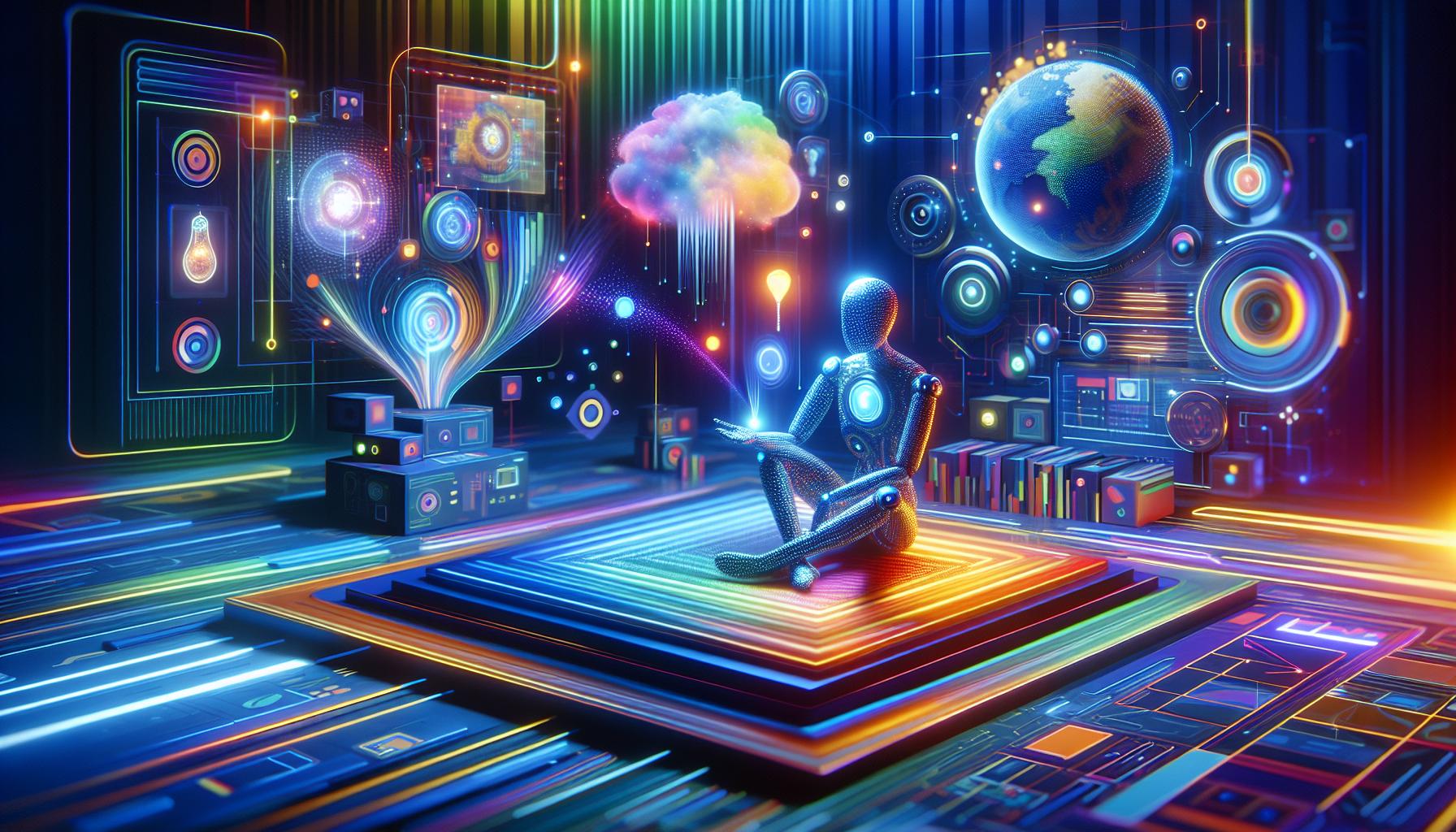
The advent of artificial intelligence (AI) has transformed various sectors-from creative industries to healthcare-raising significant questions about ownership, usage, and responsibility. As the debate intensifies regarding the ownership of innovative AI models like Stable Diffusion, the ethical implications surrounding their utilization cannot be overlooked. Who really owns these models, and what responsibilities come with their usage? These questions are pivotal as we navigate the rapidly evolving landscape of AI technology.
Implications of AI Ownership
When discussing ownership models for AI technologies, it’s essential to consider who has the rights to the generated content and the responsibility for the model’s outputs. In many cases, the creators of AI models, like Stable Diffusion, have open-sourced their technology, which democratizes access but also complicates ownership rights. This open-access strategy means that individuals and organizations can leverage the technology without a clear framework for accountability. Here are some critical elements to consider:
- Accountability: If an AI model produces harmful or inappropriate content, who is held responsible? The developers, users, or both?
- Intellectual Property Rights: What are the implications for intellectual property when AI models generate artwork or written content? Determining whether the AI or its user owns the copyright can be murky.
- Transparency: Users of AI systems must understand how data is utilized and the biases that may be embedded in the model, which requires clear communication from the creators.
Ethical Usage of AI Generated Content
Ethics must also extend to how AI-generated content is utilized. Users of AI models like Stable Diffusion should adopt responsible practices that consider the broader impact on society. This includes adhering to ethical guidelines when using AI for creative work, education, or commercial purposes. Here are some actionable steps to ensure ethical usage:
- Attribution: Clearly attribute AI-generated content where applicable, acknowledging the contributions of both the technology and its creators.
- Bias Mitigation: Actively work to understand and minimize potential biases present in AI models, applying critical judgment when using generated outputs.
- Compliance with Regulations: Stay informed about and adhere to relevant laws and guidelines, particularly those relating to copyright, data protection, and ethical standards in AI usage.
By integrating these ethical considerations into the discourse on AI ownership and usage, stakeholders can foster a more responsible approach to harnessing AI technologies like Stable Diffusion. As we explore the complex relationship between AI creators, users, and the technologies themselves, it is essential to promote practices that prioritize accountability, transparency, and ethical engagement.
Navigating Licensing and Intellectual Property for AI Models
Intellectual property (IP) has always been a complex landscape, but the emergence of artificial intelligence models like Stable Diffusion has intensified the discussion around ownership, licensing, and the ethical implications of AI. As these technologies rapidly evolve, understanding the nuances of licensing and IP rights becomes crucial for developers, enterprises, and users alike who are navigating this brave new world. The question of “Who Owns Stable Diffusion?” isn’t merely academic; it’s a pressing concern that impacts how AI models are developed, deployed, and monetized.
Understanding Licensing in AI
Licensing agreements are vital for protecting the interests of developers while offering transparency and clarity to users. In the case of Stable Diffusion, which is governed by creative licensing frameworks, it’s important to dissect the types of licenses that apply:
- Open Source Licenses: These licenses allow users to see, modify, and distribute the source code. However, they may come with conditions that require modifications to also remain open source.
- Commercial Licenses: Companies that wish to use AI models like Stable Diffusion in a proprietary manner often turn to commercial licenses, which may restrict the distribution and require fees.
- Creative Commons Licenses: Frequently applied to outputs generated by AI models, these licenses involve various levels of user rights, ranging from full use to restrictions on commercial applications.
Each type of license carries unique implications for ownership and usage, influencing how AI models like Stable Diffusion can be utilized and innovated upon.
Intellectual Property Considerations
When considering the ownership of AI-generated content, the traditional IP framework becomes blurry. For example, if an artist uses Stable Diffusion to generate a unique artwork, a number of questions arise: Does the artist retain copyright? Can they commercialize the piece? Is the underlying data used by the AI model to be treated as open or proprietary? These concerns underline the necessity of clarity within licensing agreements.
| Issue | Question | Potential Outcome |
|---|---|---|
| Copyright of AI-generated content | Who owns the copyright of images produced? | May depend on the terms of the license applied to the AI model. |
| Commercial use | Can AI-generated content be sold commercially? | Typically allowed, but contingent on the license and extent of modifications. |
| Attribution requirements | Is attribution necessitated when using AI outputs? | Varies by license; some require credit to the model or its creators. |
As participants in the AI landscape, it is essential to conduct thorough due diligence when selecting an AI model like Stable Diffusion for projects. Understanding the licensing implications and intellectual property considerations will safeguard your interests and ensure compliance with existing regulations. This proactive approach can mitigate potential legal challenges while fostering an environment of creativity and innovation.
Community Contributions: The Role of Open Source in Stable Diffusion
The rise of open-source platforms has revolutionized the landscape of artificial intelligence, particularly in projects like Stable Diffusion. This model, which excels in generating high-quality images from textual descriptions, has gained immense traction due to its availability for modification and community enhancement. Engaging a global pool of developers and artists, open-source dynamics allow for continuous improvement and innovation, enabling the technology to evolve at a rapid pace. As contributors bring their unique perspectives and skills, the collaborative nature of open source ensures that the model is not only robust but also diverse in its applications and outputs.
Empowering Collaboration and Innovation
One of the most significant advantages of an open-source approach lies in the sheer volume of community contributions that occur. Developers from different backgrounds can experiment with the Stable Diffusion model, leading to enhancements that may not have been envisioned by the original developers. This community-driven effort has resulted in various forks of the main model, tailored for specific uses such as faster inference times, improved artistic styles, or niche applications like game design or virtual environments. The feedback loop created between diverse user experiences and the developers ensures that the platform continually adapts to meet emerging needs and creative challenges.
Real-World Examples of Community Impact
The impact of community contributions is clearly illustrated through various successful projects built upon Stable Diffusion. For instance, many artists and developers have created plugins and tools that make using the model easier and more intuitive. This has led to the birth of user-friendly interfaces, educational resources, and tutorials. Additionally, platforms like Hugging Face and GitHub serve as hubs where users can share their experiments, datasets, and enhancements, further fostering a collaborative ecosystem. The ability for anyone to contribute empowers not only seasoned professionals but also newcomers who bring fresh ideas to the table.
Ensuring Sustainability and Ownership
The question of ownership remains critical, especially in the context of AI model development. By leveraging open-source licensing, like the MIT License, contributors retain their rights while allowing the larger community to build upon their work. This encourages innovation while clarifying the boundaries of use and modification. Consequently, a responsible approach to community contributions within the framework of AI models like Stable Diffusion is crucial. Balancing openness with respect for intellectual property ensures that progress continues without neglecting the contributions of individuals and organizations who have laid the groundwork for these technologies.
The collaborative spirit of the open-source community is pivotal in shaping the future of AI technologies such as Stable Diffusion. As we continue to explore who owns Stable Diffusion in the context of AI model ownership, understanding the intricate relationships fostered by community contributions and the importance of open-source collaboration remains essential for sustaining innovation and effective use of these powerful tools.
Future Trends: What’s Next for AI Model Ownership?
AI technologies, particularly those related to generative models like Stable Diffusion, are at a pivotal juncture where ownership and access are becoming increasingly complex issues. As the development of such models advances, understanding the landscape of AI model ownership will be essential for developers, businesses, and policymakers alike. The future promises to reshape the way we think about who holds the rights to these powerful tools that can create immense value while also posing ethical dilemmas.
Emerging Models of Ownership
We may see a shift towards new ownership paradigms that encourage collaboration and innovation, moving away from traditional notions of exclusive rights. Open-source licenses, for instance, play a crucial role in the AI community. They not only provide users with the freedom to leverage and modify models like Stable Diffusion but also establish a framework for responsible use. The combination of open-source development with commercialization could yield more equitable outcomes for creators while giving rise to shared profit models that are beneficial to all stakeholders involved.
- Decentralized ownership: Blockchain technology may pave the way for decentralized models where rights and revenues can be shared transparently among contributors.
- Tokenization: The use of tokens to represent ownership stakes in AI models could ensure that creators are compensated fairly based on their contributions.
- Collaborative communities: Platforms where communities come together to develop and refine AI models may shift the notion of ownership from individual to collective.
Regulatory Frameworks and Ethical Considerations
As AI matures, so too will the regulatory frameworks governing its use. Governments and organizations must address legal and ethical dimensions regarding ownership, use cases, and accountability for the outputs produced by these models. The legal implications surrounding who owns the outputs generated by AI systems-a significant inquiry stemming from discussions on AI model ownership-could shape the operational landscape for developers and users alike.
| Regulatory Area | Potential Developments |
|---|---|
| Copyright Law | Defining ownership of AI-generated works. |
| Privacy Regulations | Data usage and model transparency requirements. |
| Liability | Establishing accountability for AI decisions. |
Ultimately, the future of AI model ownership hinges on collaborative innovation, responsible development practices, and a regulatory environment that can adapt to the rapid advancements in technology. By navigating the complexities of rights, access, and ethical use, stakeholders can foster an ecosystem where AI continues to thrive and deliver value while being mindful of the social implications of its application.
Practical Tips for Creators Using Stable Diffusion in Their Work
In the rapidly evolving landscape of AI creativity, Stable Diffusion has emerged as a powerful tool that can significantly enhance the workflow of artists, designers, and content creators. Understanding the intricacies of this model-including the nuances of ownership and ethical use-can empower creators to leverage its capabilities while safeguarding their rights and contributions. Here are some practical tips for effectively integrating Stable Diffusion into your creative processes.
Utilize the Right Settings
When working with Stable Diffusion, exploring different settings can yield varied results. Here are a few adjustments you can consider:
- Sampling Steps: Increasing the number of steps can lead to more refined images, though it may slow down processing time.
- Guidance Scale: Tweak the guidance scale to control the adherence of the output to your text prompts. A higher scale typically results in images that are more closely aligned with your instructions.
- Seed Selection: Experimenting with seed values can help reproduce results or generate entirely new creative outputs.
These adjustments allow you to fine-tune your results, maximizing both creativity and efficiency.
Incorporate Feedback Loops
Feedback loops are essential in the creative process, especially when using AI-generated content. Consider implementing a structured method to gather feedback on your Stable Diffusion outputs. You might set up:
- Peer Review Sessions: Share generated visuals with colleagues or fellow creators for constructive criticism.
- Online Communities: Engage with online forums or social media groups that focus on AI art to gain diverse perspectives.
- Iterative Revisions: Use feedback to continuously refine and improve your prompts and final outputs.
By systematically incorporating feedback, you can enhance the quality of your work while also fostering community connections-valuable in any creative field.
Understand Licensing and Ownership
The question of ownership in the realm of AI-generated content is multifaceted and critical for creators using Stable Diffusion. It’s important to be well-versed in the licensing agreements associated with the model. Here’s a breakdown to consider:
| License Type | Description |
|---|---|
| Public Domain | Content is free to use and modify without restrictions. |
| Creative Commons | Check the specific license to understand if attribution is required or if commercial use is restricted. |
| Proprietary | Specific terms set by the model creators may limit usage; ensure compliance. |
By understanding these licenses, you can avoid potential legal pitfalls and ensure that your work remains your own while respecting the rights of others.
As you navigate the creative landscape with Stable Diffusion, staying informed and adaptable can make a significant difference. By employing these practical strategies, you can harness the full potential of AI-generated creativity while maintaining a clear understanding of ownership and ethical use.
Frequently asked questions
Who owns Stable Diffusion?
The ownership of Stable Diffusion is primarily with Stability AI, a company focused on developing AI technologies. However, as an open-source model, its underlying code and architecture are accessible to the public, allowing a wider community of developers and researchers to contribute.
In essence, while Stability AI holds the commercial rights, the community-based aspect of Stable Diffusion means that various individuals and organizations can modify and use the model under the conditions of its license. This collaboration enhances the model’s capabilities and promotes innovation in AI visual tools.
What is Stable Diffusion?
Stable Diffusion is a generative AI model designed to create images from textual descriptions. It uses advanced techniques in deep learning to generate high-quality visuals, making it a powerful tool for artists and creators who want to convert ideas into images.
This model works by interpreting prompt inputs and producing unique images, thus democratizing art creation. Its open-source nature means anyone can use or adapt it, opening doors for experimentation and new creative ventures.
Why does AI model ownership matter?
Understanding AI model ownership, such as for Stable Diffusion, is crucial due to implications for commercial use, ethics, and innovation. Ownership determines who can profit from the technology and how it can be ethically leveraged within society.
In this rapidly evolving field, ownership shapes the landscape for responsible AI use. Policies regarding usage rights and contributions affect developers and artists, fostering a responsible and ethical AI ecosystem.
Can I use Stable Diffusion for commercial purposes?
Yes, you can use Stable Diffusion for commercial purposes, but it’s important to adhere to the licensing terms set by its owners, primarily Stability AI. This allows creators to incorporate the tool into products and services while respecting intellectual property.
Consulting the specific license details is essential to ensure compliance. Many users successfully utilize Stable Diffusion for businesses, artistic projects, and even marketing efforts, showcasing its versatility.
How does the community contribute to Stable Diffusion?
The community contributes to Stable Diffusion by developing new models, sharing techniques, and creating extensions. This collaborative effort enhances the model’s potential and fosters innovation across various fields.
By participating in forums and contributing on platforms like GitHub, developers can share modifications and improvements, which helps in driving the technology forward and making it accessible to more users.
What are the licensing terms for Stable Diffusion?
Stable Diffusion operates under an open-source license, which permits users to access, modify, and distribute the code. However, commercial use may have specific restrictions that require adherence to certain license terms.
Understanding these terms can help users navigate their rights regarding usage and commercialization. Familiarizing yourself with the license empowers users to leverage the potential of Stable Diffusion in accordance with legal and ethical standards.
How do I get started with using Stable Diffusion?
To get started with Stable Diffusion, download the model from a trusted source like the official Stability AI repository. Installation usually involves setting up basic software dependencies, allowing you to run the model on your device or through cloud services.
Once the model is set up, you can begin creating images by providing descriptive prompts. Engaging with community forums can also enhance your learning experience as you explore advanced features and tips shared by other users.
Closing Remarks
In conclusion, understanding who owns Stable Diffusion not only unravels the complexities of AI model ownership but also illuminates the broader implications for the field of artificial intelligence. By examining key players like Stability AI, community contributors, and the open-source ethos, we gain insight into the collaborative nature of AI development. The ownership model encourages innovation and growth, empowering creators and developers alike to harness these powerful tools.
As you dive deeper into the world of AI-generated imagery, remember that the potential is vast. Experimenting with Stable Diffusion can lead to incredible artistic expressions and even practical applications in various industries. We encourage you to explore available resources, engage with community discussions, and test your own ideas and creations using AI tools. The journey into AI is just beginning, and your contributions could shape its future. Embrace the challenge, and let your creativity flow!

